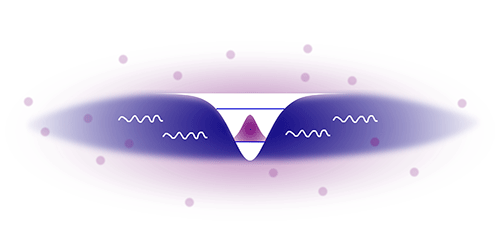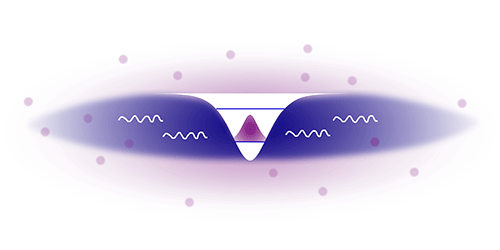A Dark Side for Qubits
No qubit is perfect, which is why researchers are exploring a variety of qubit options with different attributes. One new proposal for a qubit is a “dark” soliton—or localized density dip—in a Bose-Einstein condensate (BEC). Muzzamal Shaukat and colleagues at the Instituto Superior Técnico, Portugal, predict that these solitons have two-level quantum states with respectably long lifetimes. Assuming the qubits could be made in the lab, their long lifetimes might make them good candidates for quantum memories, which require long information-storage times.
Similar to a gravity wave in water, a density wave in a BEC can assume a fixed (solitonic) shape under special conditions in which dispersive and nonlinear effects balance out. In the 1990s, researchers engineered a dark soliton, or density depression, in an elongated BEC by using a laser to flip the phase of one half of the BEC’s wave function.
According to Terças and co-workers, the relatively low density near such a 1D dark soliton creates an attractive potential for atoms in the BEC, with two well-separated energy levels. But a pair of energy levels isn’t enough to make a qubit. The levels also have to resist decoherence, in this case, from quantum fluctuations in the surrounding BEC. The team calculated the spectrum of such fluctuations for experimentally realistic conditions. They then used the spectrum to determine the lifetime of an excited state of the soliton, finding a value of about a tenth of a second. This figure ranks near the top when compared with the lifetimes of existing matter-wave qubits, and it is within a factor of ten of the lifetimes of qubits that have already been perfected in the lab.
This research is published in Physical Review A.
–Jessica Thomas
Jessica Thomas is the Editor of Physics.





